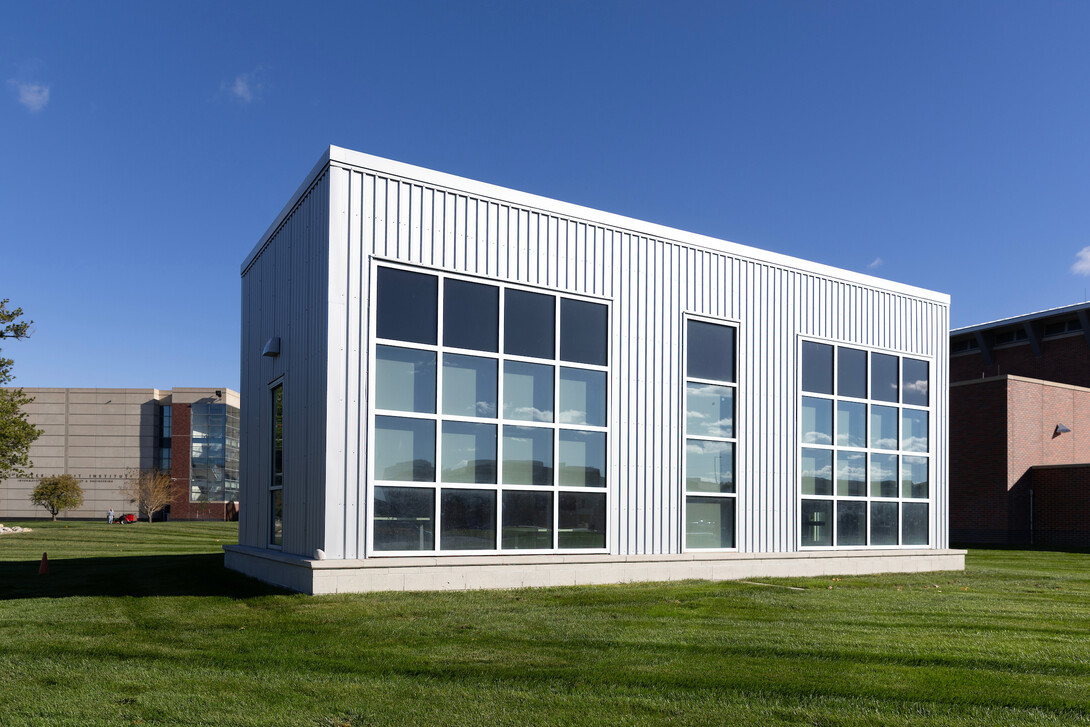
A small gray building on the west side of Omaha’s Peter Kiewit Institute is quietly shaping the future of smart building design. The 1,000-square-foot Human-centered Integrated Building Operations (HIBO) Laboratory looks modest from the outside, but inside, it is engineered as a highly controlled research testbed capable of simulating the performance of modern commercial buildings.
.jpg)
University of Nebraska–Lincoln researchers are using the space to explore how technology, human behavior, and sustainability intersect — and now, their work is scaling up with major support.
The HIBO research team has secured a three-year, $1.2 million grant from the National Science Foundation to develop a next-generation artificial intelligence system that can autonomously run building mechanical and control systems. The tool is designed to continually strike the right balance between energy use and occupant comfort, two goals that often clash in real-world design.
The key innovation lies in merging three different types of intelligence:
“This building is among only a few in the United States that allow us to study human-building interaction, smart building technologies and human perception of indoor environments,” said Iason Konstantzos, founder and director of the HIBO Lab and assistant professor in the Durham School of Architectural Engineering and Construction. Xiaoqi (Clare) Liu, also an assistant professor in the Durham School, co-directs the lab.
Liu, the project’s principal investigator, said their hybrid approach solves a fundamental challenge in the industry. “Usually, these AI algorithms are more data driven, exploring the trends between different types of data in the building,” she said. “But in real-world settings, high-quality data can be difficult to collect. For our approach, we’re infusing our fundamental knowledge of engineering into the AI to optimize the operation of the building’s equipment, save energy and provide comfort requiring the minimum amount of data possible.”
Buildings are responsible for more than 35% of U.S. carbon emissions, yet most lack enough sensors to correctly diagnose comfort and efficiency issues. Even when advanced systems are in place, occupants frequently override automated controls — a major problem the researchers seek to reduce.
“In any automated control system in the real world, people have the option to override the settings if they don’t like them,” Konstantzos said. “If people continuously override the settings, you then have a very expensive, big commercial building that is running without consideration of energy objectives at all — and then we are back 50 years in terms of our energy footprint.”
To change that pattern, the AI will offer real-time communication with occupants — first through computer notifications, and eventually through mobile and wearable updates. The idea: when people understand the building’s efficiency goals, they become partners in sustainability rather than barriers to it.

One of the biggest challenges in the field is scalability. Buildings differ widely in location, layout, usage, and equipment — making universal tools difficult to implement across markets. The Nebraska-developed algorithm, however, is intended to adapt to many environments.
“We’re figuring out what needs to happen in order to transfer this new knowledge to the real world, to places with completely different climates, building geometries, construction and people,” Konstantzos said. “I see that as a challenge, and if we are able to make a step forward in that direction, I think that would be the coolest part of this project.”
In addition to developing the algorithm, the NSF funding supports work to streamline building commissioning — the crucial process of ensuring new structures operate correctly before occupancy. Konstantzos’ approach uses low-cost, multipurpose sensors that can test performance and continue collecting data after move-in, fueling ongoing efficiency improvements.
The HIBO Lab will host early testing phases, with the goal of expanding into active commercial buildings through partnerships with the Durham School’s industry network.
The project team also includes former Husker researcher Dung Tran, now at the University of Florida. Together, they hope this effort will accelerate the evolution of buildings that are not just smart — but human-centered, sustainable, and ready for the future.
Originally reported by Tiffany Lee | Research and Innovation in Nebraska Today.